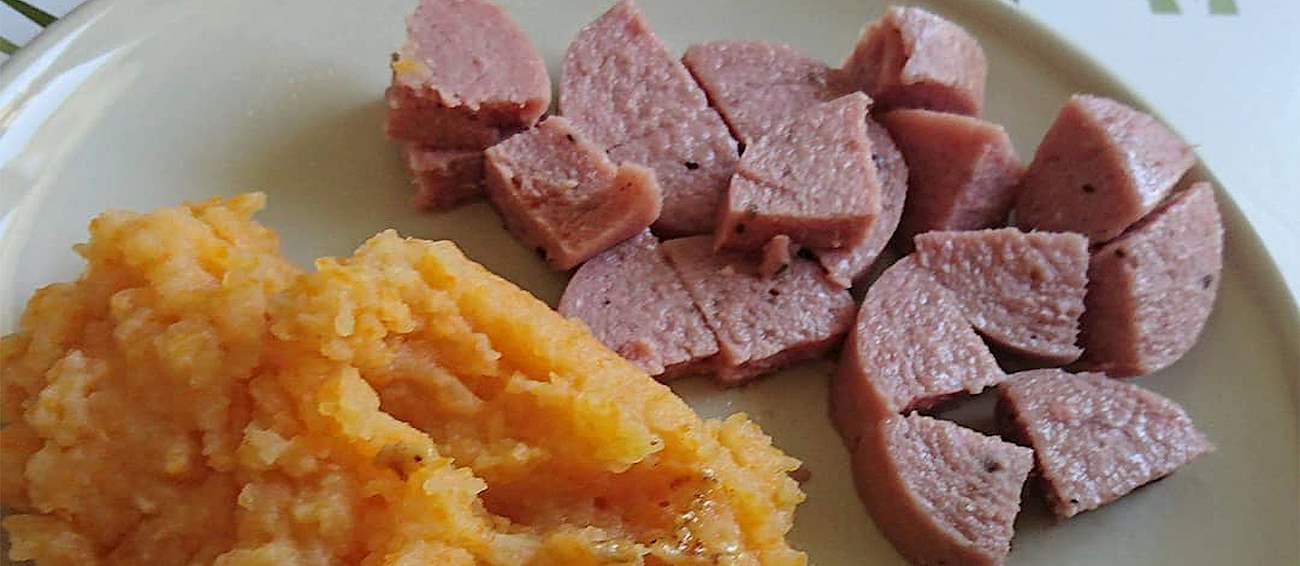Blodpudding is one of traditional Swedish dishes made with animal blood. It is typically prepared with pig blood that is mixed with flour, beer or svagdricka, butter, and seasonings, then cooked in the oven. Once prepared, it is thinly sliced and fried with a little butter or oil until slightly crispy on the surface.
The traditional way of serving it is with lingonberry jam, crispy bacon, and Swedish snaps. A variant of this dish is blodkorv (blood sausage), to which pork fat, raisins, and spices are added besides the usual ingredients. As intriguing as this dish might seem to a foreigner, blood pudding is a very popular and common food eaten for lunch or dinner in most Swedish households.
Fläskkorv is one of Sweden’s traditional raw sausages along with julkorv, grynkorv, and värmlandskorv. As its name suggests, this type of sausage is mainly composed of pork meat and fat which is seasoned and placed in a natural or artificial encasing.
Swedish pork sausages are often found on the traditional julbord (Christmas buffet) and are a typical accompaniment to brunkål (brown cabbage). They go nicely with a side of mashed potatoes, boiled potatoes, sauerkraut, pickled beets, mixed steamed vegetables, or rotmos (root mash).
In its simplest form, this lightly smoked Swedish sausage consists of coarsely ground pork, barley, spices, lard, and (optionally) potatoes or onions. Characterized by its slightly sour flavor, isterband comes in numerous regional varieties that may differ in the basic ingredients, but they are all traditionally shortly dried before being lightly smoked.
The sausages can be pan-fried or oven-baked, and they are usually accompanied by pickled beets and potatoes doused in a creamy dill-based sauce.
This Swedish sausage was invented in 1805 by a Viennese butcher, Georg Lahner. Prinskorv is made with spiced pork and veal and it is mainly enjoyed as a snack, fried and served with mustard on the side. It is also a popular element of julbord, the traditional Swedish Christmas buffet-style table.
In southern Sweden, during the midsummer party, it is enjoyed alongside Janssons frestelse, a Swedish casserole consisting of potatoes, onions, pickled sprats, and cream. Prinskorv, literally translated as prince sausage, got its name after specific cuts at each end, which resemble small crowns.
TasteAtlas food rankings are based on the ratings of the TasteAtlas audience, with a series of mechanisms that recognize real users and that ignore bot, nationalist or local patriotic ratings, and give additional value to the ratings of users that the system recognizes as knowledgeable. TasteAtlas Rankings should not be seen as the final global conclusion about food. Their purpose is to promote excellent local foods, instill pride in traditional dishes, and arouse curiosity about dishes you haven’t tried.



